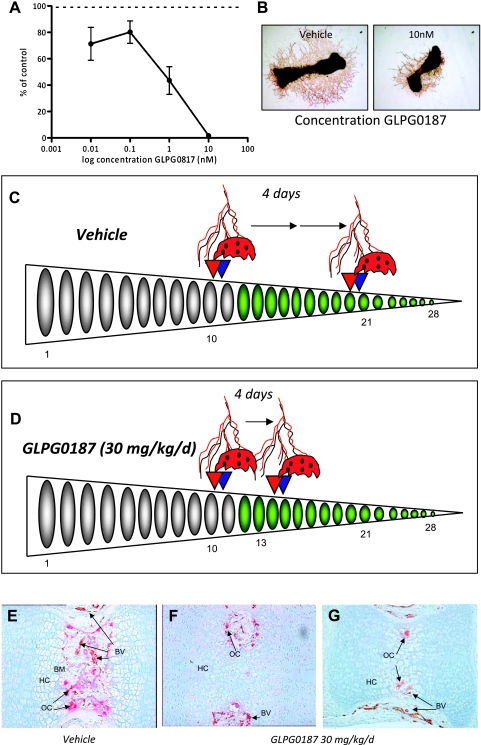Figure 2.
GLPG0187 inhibits angiogenesis both in vitro and in vivo. (A) Total area of CD31-positive capillary-like structures was determined by computerized image analysis in 17-day-old fetal mouse metatarsals treated for 10 days with either vehicle or GLPG0187. Data are expressed as percent of control ± SEM. (B) Representative images of control and 10 nM GLPG0187-treated metatarsals. Schematic representation of angiogenesis and accession to calcified cartilage of osteoclasts (adhesion to bone, migration on bone surface, and bone resorption) in the caudal vertebrae in neonatal mouse-tails under control conditions (vehicle) (C) or GLPG0187-treated conditions (D). Tails were processed and double-stained for TRAcP (red) and lectin (brown). At day 2 postpartum (p.p.), osteoclast-precursors and blood capillaries have started to invade the bone collar at caudal vertebrae 11 and 10, respectively. Four days later, osteoclast-precursors and capillaries have progressed in a distal manner, and their invasion fronts can now be identified at V20 (capillaries) and V21 (osteoclasts) under control conditions and at V14 (capillaries) and V15 (osteoclasts) in the GLPG0187-treated animals. n = 4 mice/group. Representative images of vertebrae 13 of vehicle treated (E) or GLPG0187-treated animals (F and G) are shown. BM indicates bone marrow; BV, blood vessels; HC, calcified cartilage; OC, osteoclast.

